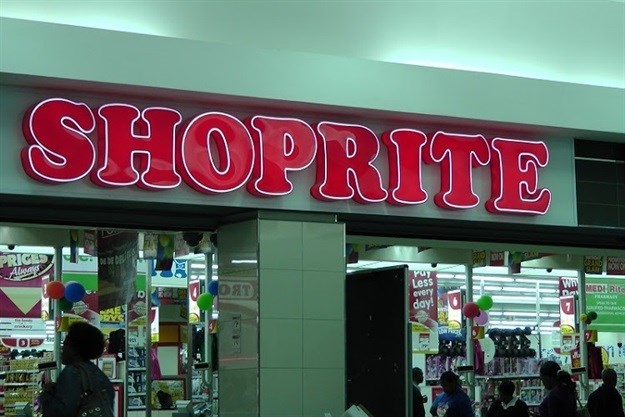Shoprite profits come roaring in

It has been 27 years since Shoprite, then and until recently led by Whitey Basson, took its first tentative steps beyond SA’s borders.
The move was greeted by widespread market criticism.
Shoprite has, mostly, proven that any pointed fingers have been hopelessly misdirected.
Basson (now retired) termed African expansion Shoprite’s second growth engine and it is proving to be just that.
The retailer’s trading update for the six months to December 2016 leaves no doubts.
Shoprite’s operations in 14 other African countries spanning 375 stores (as at June 30 2016) delivered an exceptional 32.2% rise in year-on-year sales, to about R12.9bn.
This will take non-SA operations’ contribution to almost 21% of group sales, up from 17.5% in the six months to December 2015.
In constant currency terms the rise in sales in the latest update period was an even more impressive 51.7%.
Working in Shoprite’s favour is the crippling shortage of foreign currency, particularly in oil-producing countries Angola (its biggest non-SA market) and Nigeria. The currency shortage has left local traders desperately short of their mainstay: imported stock.
It is a situation in which Shoprite is using its financial muscle to full advantage.
“Shoprite has its external balance sheet in SA to fund stock requirements in its African operations,” says Evan Walker of 36One Asset Management.
Availability of stock is enabling Shoprite to attract a whole new group of consumers into its stores: those who have traditionally bought from the huge number of small, informal traders.
“There has been a perception among consumers that Shoprite was an expensive place to shop, suitable for the elite only,” says Joachim Kotze, an equity analyst at Denker Capital.
Now, with those sceptical consumers drawn into Shoprite stores, the perception may well be changing. Shoprite has probably gained a significant number of new, permanent customers, says Kotze.
Walker agrees. “I believe Shoprite has entrenched its position,” he says.
Shoprite is probably not getting much cash, in the form of repatriated profits, out of its African operations.
Independent retail analyst Syd Vianello does not view this as a matter of concern. “They will just continue to use local profits to fund expansion,” he says.
Shoprite’s expansion in Africa remains vigorous, with more than one new store being opened every week. The number of stores outside SA by the end of 2017 is targeted to stand at 415 — that is 58 (16%) more than a year earlier.
Though Shoprite’s operations outside SA were the highlight of the trading update to December, local operations more than held their own. They did so in a market where most consumers are being hit by rampant food-price inflation, slowing household income growth and difficulty in accessing credit.
Trading through more than 1,170 Shoprite, Checkers and USave stores, the SA supermarkets division (the core of group operations) ended the six months to December with year-on-year sales rising 10.7% to just on R51bn and sales volume lifting 3.3%. On a like-for-like (same store) basis, sales were up 7.4% — in line with internal inflation at the same level.
“It was a very good showing,” says Walker.
Woolworths is the only competitor with which an up-to-date comparison can be made.
It was no match for Shoprite.
Despite Woolworths priding itself on the resilience of its core market — the upper income segment — in the 26 weeks to December 25 it reported food volume growth of only 0.3% and a 3.6% fall in like-for-like sales volume.
Shoprite’s R5.2bn annual revenue furniture division also shone, lifting sales by 10%.
The division operates through 53 House & Home stores and 454 OK Furniture stores, of which 67 are in seven other African countries.
It was a solid performance in a sector which is far from enjoying boom conditions. Reflecting this, Statistics SA reports that in the three months to November furniture and appliance sales in current money terms fell by 0.3% year-on-year. In the previous three months, sales in current money terms were down 3.4%.
In 2016 Shoprite’s defensive quality again caught the attention of the market which, in the two previous years, had dished out harsh punishment to its share price. It resulted in Shoprite becoming one of the top five best-performing retail shares in 2016.
The market’s renewed confidence in Shoprite was also rewarded by a 12.7% rise in its headline EPS (HEPS) in the year to June.
A similar annual HEPS growth pace of 11%-13% appears well within Shoprite’s reach in its financial years to June 2017 and 2018. In its current financial year it would put Shoprite on a forward p:e of about 17.7, a level offering fair rather than great value.
However, putting a fair value on Shoprite, led since January by new CEO Pieter Engelbrecht, is no easy task. It has become more a matter of speculation following the announcement on December 14 of the intention to form a new entity, Retail Africa, through the merger of Shoprite and Steinhoff’s operations in SA and the rest of Africa.
All that is known so far is that to create Retail Africa, Shoprite will issue new ordinary shares to Steinhoff in exchange for “a significant equity interest” in Shoprite.
While the market has given news of the proposed creation of Retail Africa a lukewarm reception, Vianello believes it will go ahead. “It will be a complex deal but nothing is insurmountable,” he says.
If Retail Africa becomes a reality it will be a giant, with annual revenue topping R170bn. “It will own 80% of the wallet of the lower [SA] LSM segments,” says Kotze.